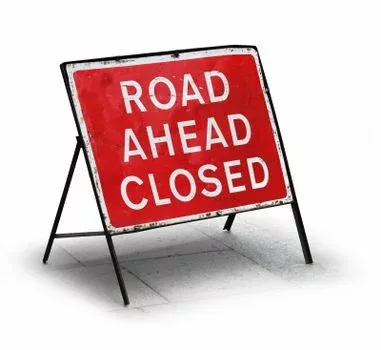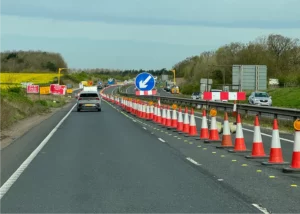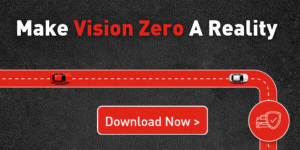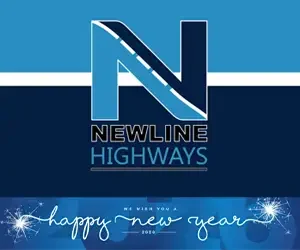New research published today by Transport Focus has found that symbols on diversion signs used on roads to show the alternative route to follow (squares, diamonds and circles) are not widely understood by road users yet are widely used.
The independent watchdog is looking to work with National Highways to help improve drivers’ experience of diversion routes. This is after it concluded that improvements were needed to help improve road user confidence and trust when navigating diversions off England’s motorways and major ‘A’ roads.
Road users in the research said they tend not to have confidence in official diversion routes, suspecting them not to be the quickest way of getting past the roadworks and many people prefer to use local knowledge or satnav to find what they think will be the best route.
In the coming year Transport Focus aims to work with National Highways in the East of England to help trial initiatives to improve user experience and take further steps to minimise the frustrations and difficulties road users face. Transport Focus will work to ensure that good practice that results from this will be adopted throughout National Highways in updated policies and guidance documents.
The watchdog is calling for National Highways to develop a programme to increase road users’ confidence navigating diversion routes, including working to ensure nobody is in doubt that they are on the right road or which way to go at a junction.
Road users said they understood that roads needed to be maintained, and that roadworks and related diversions were seen as annoying but necessary. However, the management of roadworks continues to score poorly in Transport Focus’s Strategic Roads User Survey, which measures satisfaction with journeys using the motorways and major ‘A’ roads. Satisfaction with the user experience of roadworks stands at 48 per cent, compared with 70 per cent satisfaction with the journey overall.
Ahead of speaking at the road industry conference Highways UK, Transport Focus Chief Executive Alex Robertson, said:
“Most of us will have been diverted onto unfamiliar roads because of roadworks and feared we’ll get lost ‘in the middle of nowhere’. Our research shows how anxious this makes people feel and identifies where improvements can be made.
“Simply being compliant with sign rules is not enough. Diversion signs must give road users’ confidence, including particularly at junctions, and never leave someone in doubt they are heading in the right direction. We’re pleased to be working with National Highways to help tackle the issue.”
The watchdog is looking to National Highways to:
- Review the use of symbols to show the alternative route to follow (squares, diamonds and circles) which are not widely understood by road users yet are widely used by National Highways.
- Ensure there is widespread awareness when roadworks will result in a diversion, giving people the option to defer travel, take a different route or simply be prepared – mentally and practically.
- Make sure that drivers that are unaware of closures are warned on approach and provided with information needed to proceed confidently with clear expectations about what lies ahead.
- Continue to enhance the data it provides to satnav and mapping providers, to enable them to best provide end users with the information they need to plan and undertake their journey.
- Have greater attention to detail when signing a diversion route. A missing, obscured or ambiguously placed sign can cause confusion that undermines user confidence at a junction or introduces doubt that drivers are going the right way.
Drivers in the research told Transport Focus they can feel frustrated when they encounter a diversion, as well as nervousness and trepidation as to what lies ahead. Road users can feel overwhelmed and stressed when faced with multiple diversions on the same route and multiple different symbols at a junction. One driver in the research encountered a diversion off the A52 near Nottingham with signs showing ‘diverted traffic’ in both directions, with nothing to indicate which option was for which destination.
Lorry drivers in the research said they had particular needs when it comes to diversion signage. They need to know for sure that a route is suitable for them, without height or width restrictions. Lorry drivers are more likely to follow the official diversion route than others because there are risks for them and their employer if they choose a route that turns out not to be suitable.
Diversion routes are also a concern for those disabled road users who need to plan their journeys meticulously, for instance to
manage energy levels or take medicine. Encountering a diversion which disrupts their plan can be stressful and result in significant impact on them.Disabled road users said it is essential for them to know how long the diversion will take and, particularly on longer diversions, whether there are places to stop to rest, eat or use the toilet.























